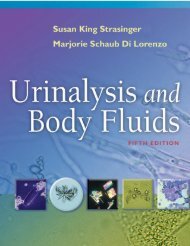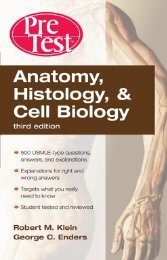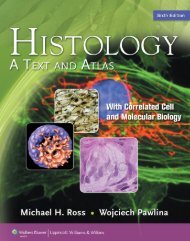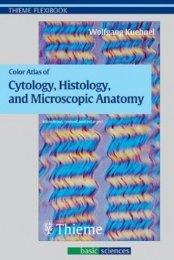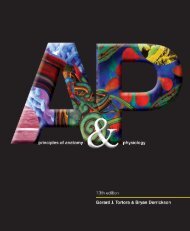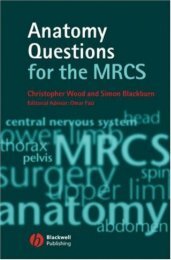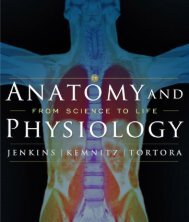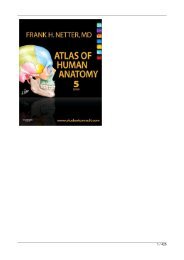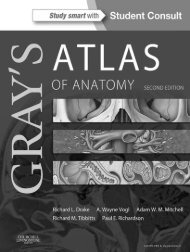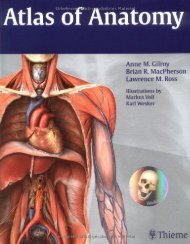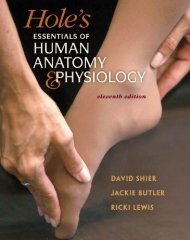theanatomyandphysiologylearningsystem4epdfdr-150930024720-lva1-app6891
You also want an ePaper? Increase the reach of your titles
YUMPU automatically turns print PDFs into web optimized ePapers that Google loves.
Chapter 2 Chemistry, Matter, and Life 41<br />
Chapter QUIZ<br />
Recall<br />
Match the definitions on the left with the appropriate term on the right.<br />
_____ 1. Positively charged particle in the nucleus of an atom<br />
_____ 2. Atom that has lost or gained an electron<br />
_____ 3. Substance being dissolved<br />
_____ 4. Alcohol is the solvent<br />
_____ 5. Positively charged ion<br />
_____ 6. Has a pH less than 7<br />
_____ 7. Bond between amino acids<br />
_____ 8. Adenosine triphosphate<br />
_____ 9. Building block of DNA<br />
_____ 10. Smallest unit of a compound<br />
A. Acid<br />
B. ATP<br />
C. Cation<br />
D. Ion<br />
E. Molecule<br />
F. Nucleotide<br />
G. Peptide<br />
H. Proton<br />
I. Solute<br />
J. Tincture<br />
Thought<br />
1. The symbol for sodium is<br />
A. Na<br />
B. So<br />
2. The molecular formula for sodium bicarbonate is NaHCO 3<br />
.<br />
What is the total number of atoms in one molecule of<br />
sodium bicarbonate?<br />
A. 3<br />
B. 6<br />
C. S<br />
D. N<br />
C. 4<br />
D. 12<br />
3. What type of reaction is represented by the following<br />
equation?<br />
A. Synthesis<br />
B. Decomposition<br />
HgCl 2<br />
+ H 2<br />
S → HgS + 2HCl<br />
C. Single replacement<br />
D. Double replacement<br />
4. What type of organic molecule is represented by the formula<br />
C 6<br />
H 12<br />
O 6<br />
?<br />
A. Carbohydrate<br />
C. Lipid<br />
B. Protein<br />
D. Steroid<br />
5. A nucleotide molecule consists of<br />
A. Thymine, adenine, C. Pentose, a phosphate<br />
and guanine<br />
group, and a<br />
B. Phosphate, adenine,<br />
nitrogenous base<br />
and a nitrogenous base D. Phosphate, adenosine,<br />
and ribose<br />
Application<br />
1. A chemical reaction is proceeding very slowly. Suggest four<br />
things you might try to speed up the reaction.<br />
2. The following reaction is reversible:<br />
+<br />
CO +HO<br />
<br />
H +HCO<br />
2 2<br />
-<br />
3<br />
As you breathe, you exhale CO 2<br />
and remove it from the<br />
body. What effect does this have on the above reaction? Does<br />
the reaction proceed to the right or to the left as a result of<br />
exhaling CO 2<br />
?




